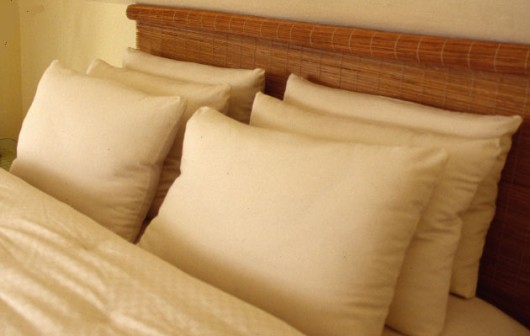We take the humble pillow for granted. Night after night, we drop into bed and place or weary head on its cool surface and think nothing about where it came from… who discovered the pillow? How was it invented and who realised that raising the head slightly could give so much comfort?
The Earliest Pillow
Not many are aware that the earliest recorded use of the pillow was back in 750BC in a country known then as Mesopotamia (today, we know it as Iraq). But, if you have visions of fluffy, overfilled pillows think again; these ‘pillows’ were hard as they were made from stone!
Egyptians were believed to have had softer pillows, but they too favoured the ‘firm’ approach although it is not understood why. It was the ancient Chinese however, who really perfected this hard pillow approach, again using stone but in some cases wood. The reason within Chinese culture at the time was that a soft head rest robbed you of your much needed energy; hence, they developed ornate stone pillows.
Geisha girls, used these pillows for another reason and that was to maintain perfection for their hair – something that took a long time to do and they did not want to this every day!
However, over time, the materials used in pillows started to soften with buckwheat pillows coming into common and popular use as they would contour to the shape of the head and neck. The ancient Greeks and Romans were the first culture of peoples to use a pillow similar to the ones we are used to seeing on beds today but this was not to last…
The Middle Ages and the Pillow
The pillow fell out of favour; just like we have trends ad fads today, there were fashions back in the Middle Ages too with Henry VIII, according to various history books, banning the use of the pillow by anyone but pregnant women. Rumour has it, however, that he had a pillow.
And then came along the Industrial Revolution from the mid-18th to the 19th Century and the huge surge in the textile industry. The ease with which raw materials could now be quickly and cheaply transported meant that cottons from all over the world made their way to the mills of the north; cotton was cheap and from this time on, everyone could afford a better quality of living and life than they previously had.
Soft furnishings were everywhere; the only thing that changed from house to house was the decadence afforded by wealth. The pillow arrived – soft and ornate – and stayed as part of the British home right up until now.
And the history is set to continue
Pillows was square or rectangular; theories abound that we should sleep with only one, and yet other people cannot sleep without 2 or 3 cushioning their head and shoulders. No matter what position you sleep, there is a perfect pillow waiting for you.
They have changed in shape too; V pillows for cushioning the back as you sit in bed; there are pillows that wrap the neck for when you doze on your travels. The material has changed from natural fibres to synthetic but this is beginning to swing back again as more and more people are realising the cool and comfortable sleep they can have with goose down or wool pillows.
The guest author was Dick Beijen who invented the folding pillow and is the founder of Apillow Ltd. Dick likes to share his knowledge and experiences by blogging.



